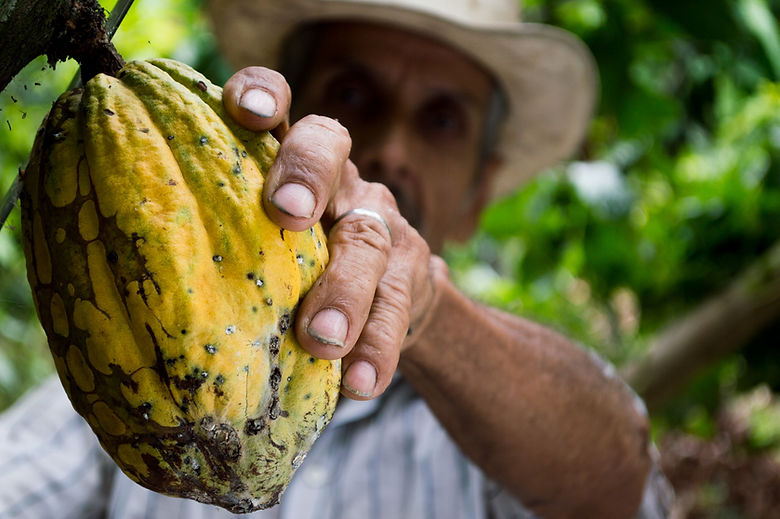Fair to Wear


A digital story about the Fairtrade Fashion Industry
By Jason Cheetham, Zemmy Lee, Lise Andreassen & Nonny Bulle

On 24 April 2013, the world witnessed the deadliest disaster in the history of the garment industry worldwide. A high-rise building housing several factories producing clothing for Western consumers collapsed into a deadly heap in Savar, Bangladesh. The collapse occurred just a day after an industrial review had found cracks in the building’s infrastructure and had subsequently advised owners of the factories to suspend operations until a rigorous structural inspection by BUET engineers had been conducted (BDNew24s, 2013 a). The fatal result of not heeding this warning was a reported death toll of 1134, with over 1000 workers left badly injured (Hoskins, 2015), and another 146 still unaccounted for (BDNews24, 2013 b). Further investigations found that the Rana Plaza Building had violated structural codes, with the four upper floors having been constructed without permits (Manik, 2013).
This fatal incident lifted the curtain on a broader culture of unsafe and unfair practices whose occurrence is rampant within the fashion industry supply chain. It was reported that 80% of Rana Plaza workers worked a standard shift of 13 to 14.5 hours a day, earning a meagre 12 - 24 cents per hour (USD) (Institute for Global Labour, 2014). Other reports such as the U.S. Labor Department’s Findings on the Worst Forms of Child Labor revealed that 168 million children between the ages of 5- 17 worldwide were labourers. Of these, at least 6 million children were involved in forced labour (U.S. Department of Labour, 2014), with many others subjected to hazardous jobs (Linchi, 2014). Asia Floor Wage Alliance (AFWA) reported that in some factories, workers were subjected to 14 hour shifts in sweltering heat, without adequate supplies of drinking water or any breaks, leading to episodes of mass fainting – with some workers reportedly having being forced to work overtime or faced firing, verbal abuse, or beatings (Bain, 2016). These injustices also occur at the agricultural levels of the supply chain, with cotton farmers reportedly enduring long-term exposure to pesticides, lead-based dyes and poisoning from chemicals due to lack of sufficient occupational health and safety protocols (Stinson, 2016) & (Anti Slavery Organization, 2017).
Such devastating practices highlight then need for companies worldwide to advocate for both better working conditions and improved terms of trade for farmers and workers in developing countries. By requiring licensees (or partner companies) to pay sustainable prices, organisations such as Fairtrade strive toward the development of thriving farming and worker communities, ensuring that members of these communities get more control over their futures, while protecting the environment in which they live and work (Spector, 2013) & (Fairtrade ANZ, 2016). This also means they can enjoy freedom of association (e.g. forming and joining unions if they wish), safe workspaces and sustainable wages; that forced child and slave labor remain strictly prohibited; and that high standards of waste, water and energy management are upheld. For companies and businesses that register for Fairtrade certification, it is a pledge to ensuring equitable trade practices at every level of their supply chain; this includes transparency and traceability in global supply chains. When we as consumers choose to buy products with the Fairtrade stamp we show that we care about the livelihoods of these workers and farmers, and subsequently invest in better support to their communities.
References:
1 Staff Correspondent, 'Cracks were seen in Rana Plaza Tuesday', BDNews24, 25 April 2013, http://bdnews24.com/bangladesh/2013/04/24/cracks-were-seenin-rana-plaza-tuesday, (accessed 30 May 2017).
2 Hoskins, T., ‘Reliving the Rana Plaza factory collapse: a history of cities in 50 buildings, day 22’, The Guardian, 23 April 2015, https://www.theguardian.com/cities/2015/apr/23/rana-plaza-factorycollapse-history-cities-50-buildings, (accessed 30 May 2017).
3 Staff Correspondent, 'Identities of 146 missing Rana Plaza workers listed', BDNews24, 30 March 2013, http://bdnews24.com/bangladesh/2014/03/30/identities-of-146-missingrana-plaza-workers-listed, (accessed 30 May 2017).
4 Ali Manik, J., Yardley, J., ‘Building Collapse in Bangladesh Leaves Scores Dead’, The New York Times, 24 April 2013, www.nytimes.com/2013/04/25/world/asia/bangladesh-building-collapse.html, (accessed 30 May 2017).
5 Institute for Global Labour and Human Rights, 'Rana Plaza: A look back, and forward', Global Labour Rights, 24 April 2014, www.globallabourrights.org/alerts/rana-plaza-bangladesh-anniversary-a-lookback-and-forward, (accessed 30 May 2017).
6 Linchi, J., 'Report: 168 Million Children Worldwide Were Laborers in 2013', Time, 8 October 2014, http://time.com/3479472/child-labor/, (accessed 30 May 2017).
7 U.S. Department of Labor, 2013 Findings on the Worst Forms of Child labor, 30 September 2014, https://www.dol.gov/ilab/reports/childlabor/findings/2013TDA/2013TDA.pdf, (accessed 30 May 2017).
8 Bain, M., '“A web of terror, insecurity, and a high level of vulnerability”: H&M, Gap, and Walmart are accused of widespread worker abuse', Quartz Media, 31 May 2016, https://qz.com/695763/a-web-of-terror-insecurity-and-a-high-levelof-vulnerability-hm-gap-and-walmart-are-accused-of-hundreds-of-acts-ofworker-abuse/, (accessed 30 May 2017).
9 Anti Slavery Organization, End Uzbek Cotton Crimes, 2017, https://www.antislavery.org/take-action/campaigns/end-uzbek-cottoncrimes/, (accessed 31 May 2017).
10 Stinson, R., The Top 5 Ethical Issues in the Fashion Industry, Eco Warrior Princess, 6 September 2016, https://www.ecowarriorprincess.net/2016/09/ethical-fashion-101-the-top-5- ethical-issues-in-the-fashion-industry/, (accessed 30 May 2017).
11 Spector, K., ‘5 Reasons You Should Buy Fair Trade’, EcoWatch, 5 October 2013, https://www.ecowatch.com/5-reasons-you-should-buy-fair-trade- 1881803195.html, (accessed 30 May 2017).
12 Fairtrade Australia New Zealand, Fairtrade in Action, 2016, http://fairtrade.com.au/Fairtrade-in-Action, (accessed 30 May 2017).
The True Cost:

Some more Australian Fairtrade Certified brands:
Audrey Blue www.audreyblue.com
Bag People www.bagpeople.com
Bhumi Organics www.bhumi.com.au
Ecobags www.ecobags.co.nz
Elkie & Ark www.elkieark.com
Etiko www.etiko.com.au
Kathmandu www.kathmandu.com.au
Mighty Good Undies www.mightygoodundies.com.au
My Comfy PJs www.mycomfypjs.com
OCC Apparel www.occapparel.com.au
RREPP www.rrepp.com.au
Servi Store www.servistore.com.au
The Road Clothing www.the-road.com.au
Trade Bags www.trade-bags.com
Wholly Grail www.whollygrail.com
Yuki Threads www.yukithreads.com
The Supply
Chain
Nick Savadis - Founder of Etiko Clothing
The emergence of 'fast fashion' in Australia
Nick Savadis - Founder of Etiko Clothing
